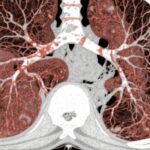Highlights
- Single-dose AAV-mediated gene therapy maintained durable factor IX expression over 13 years in severe hemophilia B patients.
- Annualized bleeding rates and factor IX concentrate usage declined by nearly tenfold and twelvefold, respectively.
- No late-onset safety issues, inhibitor development, thrombosis, or chronic liver disease observed throughout long-term follow-up.
- High neutralizing antibody levels to AAV8 persisted, posing potential barriers for vector re-administration.
Clinical Background and Disease Burden
Hemophilia B is a rare, X-linked recessive bleeding disorder caused by mutations in the F9 gene, resulting in deficient or dysfunctional coagulation factor IX (FIX). Severe hemophilia B, defined by FIX activity levels less than 1 IU/dL, leads to frequent spontaneous bleeding, especially into joints and muscles, causing progressive arthropathy and reduced quality of life. Standard management involves lifelong intravenous replacement of FIX concentrates, which is costly, burdensome, and associated with risks such as inhibitor development and variable pharmacokinetics. The need for durable, less invasive, and potentially curative therapies remains a significant unmet clinical need.
Research Methodology
This study presents the longest follow-up to date for AAV-mediated gene therapy in hemophilia B. Ten adult male participants with severe hemophilia B received a single intravenous infusion of a self-complementary adeno-associated virus serotype 2/8 vector encoding a codon-optimized human FIX gene (scAAV2/8-LP1-hFIXco). The cohort was divided among three dose groups: low (2×1011 vg/kg, n=2), intermediate (6×1011 vg/kg, n=2), and high (2×1012 vg/kg, n=6). Primary efficacy endpoints included sustained FIX activity, annualized bleeding rate (ABR), and FIX concentrate usage. Safety endpoints comprised clinical adverse events, liver function monitoring, and imaging. Median follow-up was 13 years (range, 11.1–13.8).
Key Findings
Results demonstrated remarkable long-term efficacy. FIX activity levels remained stably elevated relative to baseline across all dose cohorts: mean levels were 1.7 IU/dL in the low-dose group, 2.3 IU/dL in the intermediate, and 4.8 IU/dL in the high-dose group. Importantly, seven of ten participants discontinued routine prophylactic FIX infusions.
The median ABR decreased from 14.0 (IQR, 12.0–21.5) pre-treatment to 1.5 (IQR, 0.7–2.2) post-treatment, a reduction by a factor of 9.7. FIX concentrate use declined by a factor of 12.4 (IQR, 2.2–27.1). These clinical improvements translated to reduced joint bleeds, fewer hospitalizations, and enhanced daily functioning for most participants.
Safety analyses revealed 15 vector-related adverse events, primarily transient, asymptomatic elevations in liver aminotransferases. No participant developed FIX inhibitors, thrombosis, or chronic liver injury. Two cases of cancer occurred during follow-up but were rigorously adjudicated as unrelated to the gene therapy vector. A single liver biopsy performed 10 years post-infusion showed ongoing transgene expression without evidence of fibrosis or dysplasia.
High levels of neutralizing antibodies against AAV8 persisted throughout follow-up, indicating sustained immunological memory and potential challenges for repeat vector administration if needed.
Mechanistic Insights and Biological Plausibility
AAV vectors achieve durable transgene expression by delivering episomal DNA to hepatocytes, which are the natural site of FIX synthesis. The selective expression in liver cells minimizes off-target effects and allows for stable, physiological levels of FIX. The absence of long-term hepatic toxicity or genotoxicity in this cohort supports the safety of hepatic AAV gene transfer. However, the persistence of neutralizing antibodies post-infusion underscores the importance of vector selection and the need for alternative strategies for re-administration.
Expert Commentary
Leading guideline bodies, such as the World Federation of Hemophilia, have highlighted gene therapy as a transformative development in hemophilia care. The durability of response seen in this 13-year follow-up sets a benchmark for future trials and supports the paradigm shift toward one-time, curative therapies for inherited bleeding disorders.
Controversies and Limitations
Major limitations include the small sample size (n=10) and the absence of a comparator group, which may restrict generalizability. All participants were adult males, limiting applicability to pediatric or female patients with hemophilia B. The high cost of gene therapy, manufacturing complexities, and unresolved questions about long-term oncogenic risk and re-administration strategies remain important concerns. Further, the durability of efficacy in the context of ongoing liver cell turnover, particularly in younger populations, warrants additional study.
Conclusion
A single intravenous administration of scAAV2/8-LP1-hFIXco gene therapy offers durable FIX expression, significant and sustained reduction in bleeding and factor usage, and no late safety signals over 13 years of follow-up. These data strongly support the long-term efficacy and safety of AAV gene therapy for severe hemophilia B, heralding a new era in the management of this challenging disorder. Ongoing surveillance and larger, more diverse patient populations will be critical to fully elucidate the therapy’s benefits and risks.
References
1. Reiss UM, Davidoff AM, Tuddenham EGD, et al. Sustained Clinical Benefit of AAV Gene Therapy in Severe Hemophilia B. N Engl J Med. 2025 Jun 12;392(22):2226-2234. doi: 10.1056/NEJMoa2414783. PMID: 40499172; PMCID: PMC7617823.
2. World Federation of Hemophilia. Guidelines for the Management of Hemophilia, 3rd edition. 2020.



